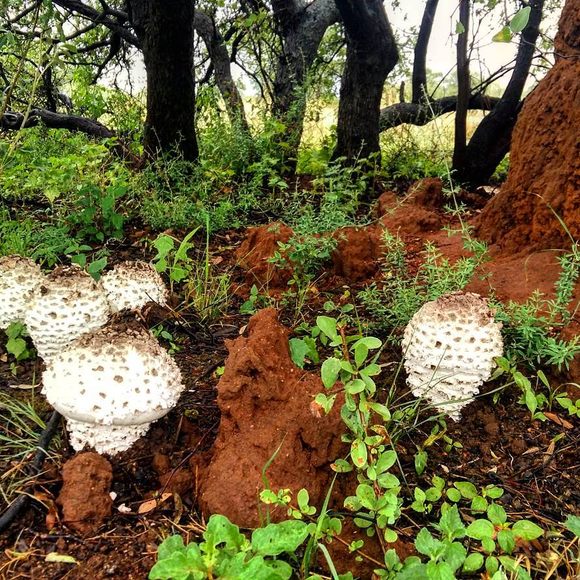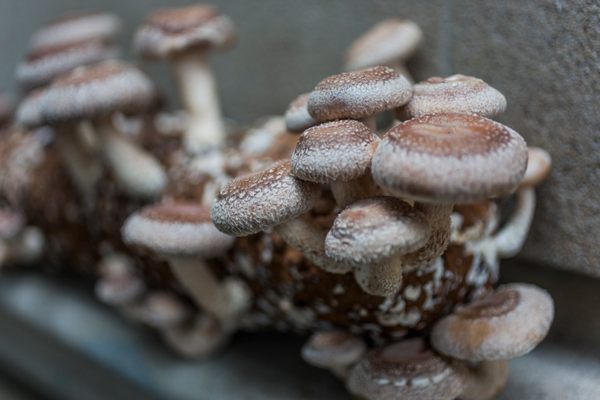Ingredients & Condiments
Omajowa
Massive mushrooms spring from tall termite mounds during rainy season in Namibia.
Sandcastles of mud and termite saliva dot the African savannah, providing locals with an assortment of culinary delights. In the Democratic Republic of Congo, abandoned works of termite architecture double as outdoor ovens. Kenyans roast termites to serve alongside corn porridge. And in the northern regions of southern Africa, where rainfall is exceptionally high, giant mushrooms spring from the base of tall termite mounds after heavy downpours.
Around January, February, and March, residents of central and northern Namibia anticipate the sudden appearance of Termitomyces schimperi, also known as omajowa, the Herero name for these termite-hill mushrooms. Harvested by locals, the wild mushrooms—which can weigh more than two pounds apiece—enhance meals and supplement incomes. As such, they symbolize growth and prosperity. Their flavor, which some liken to veal, is unique and hearty, and the firm caps are big enough to fry like hunks of schnitzel. Cooks chop up the stems to add to soups and risottos. In kind with store-bought mushrooms, diners savor the meaty mushroom’s flavor when it’s prepared simply: cooked in butter and seasoned with salt.
Foragers keep an eye out for cracks in termite nests, as the fissures are prime territory for omajowa. And since other creatures feed on the sumptuous shrooms, the ephemeral fungus must be collected with haste.
Where to Try It
-
Leo’s at the Castle Website
Beate Raith, Heinitzburg Castle, 22 Heinitzburg Street, Windhoek, NamibiaThis restaurant has been known to feature omajowa on its menu, alongside a springbok (antelope) fillet. It's housed in a historic hotel overlooking the city skyline.
Written By
 rachelrummel
rachelrummel
Sources
- gondwanatravel.wordpress.com/2012/01/20/omajova-a-wild-delicacy/
- theculturetrip.com/africa/namibia/articles/namibia-s-10-best-cultural-restaurants-great-food-in-windhoek-and-beyond/
- www.fondazioneslowfood.com/en/ark-of-taste-slow-food/omajova-mushroom/
- www.tandfonline.com/doi/pdf/10.1080/21501203.2018.1500498?needAccess=true
- www.huffpost.com/entry/termites-mushrooms-and-ch_b_9485434














